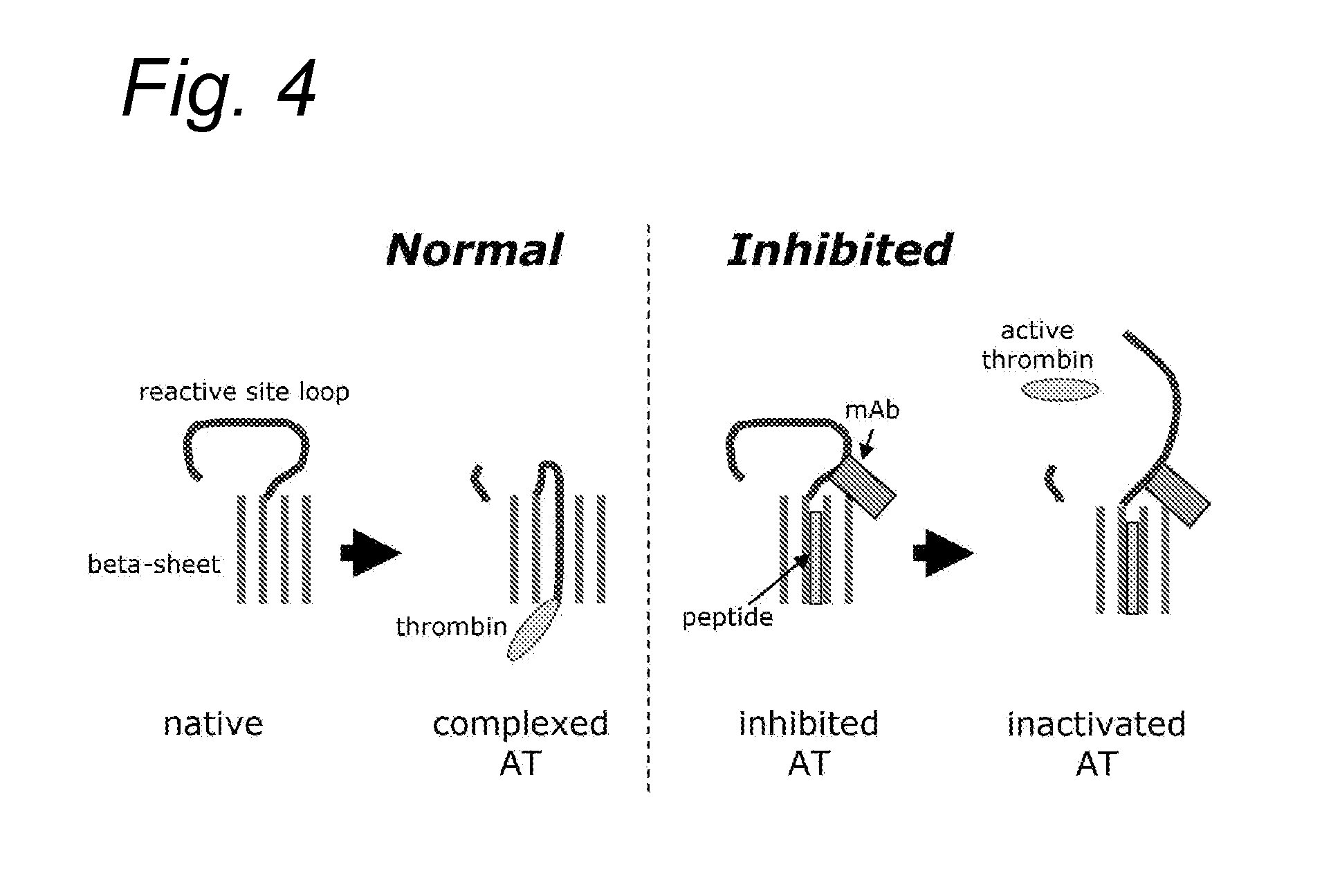Compounds for use in boosting coagulation
a technology of boosting coagulation and blood clotting factors, applied in the field of medicine, can solve the problems of spontaneous bleeding, thrombotic disease, and severe hemophilia, and achieve the effects of preventing bleeding, increasing bleeding risk, and controlling the amount of at-inhibitor
- Summary
- Abstract
- Description
- Claims
- Application Information
AI Technical Summary
Benefits of technology
Problems solved by technology
Method used
Image
Examples
example 1
Inhibition of AT Activity in Plasma with Polyclonal Antibodies Against AT
[0113]As an example to show that antibodies indeed can inhibit AT activity in human plasma, polyclonal antibodies were purified from serum of a goat immunized with human AT (Bioconnect, Huissen, the Netherlands; Catalog nr: AHP1750). Purified AT (Kybernin P, CSL-Behringwerke, Marburg, Germany; Catalog nr:83167111A) was coupled to CNBr-activated Sepharose 4B (GE Healthcare Life Sciences, Diegem, Belgium) according to manufacturer's instructions (approximately 25 mg AT to 1 gram CNBr-activated Sepharose). The beads were washed and subsequently incubated with 2.5 ml of goat antiserum against human AT diluted 1 to 2 in phosphate buffered saline, pH 7.4 (PBS), for 2 hours at room temperature. The beads were washed again and then eluted with 0.1 M glycine 0.15 NaCl, pH 2.5. The beads were spun down by centrifugation for 1 minute at 1300 g, the supernatant was removed, immediately neutralized with 1M Tris, pH 8.5, and...
example 2
Effects of AT Inhibitors on Thrombin Generation in Normal and in FVIII-Deficient Plasma
[0117]In a next set of experiments we then established whether inhibition of AT by addition of the affinity purified anti-AT antibodies could affect thrombin generation induced by TF in normal plasma and in hemophilic plasma.
[0118]Thrombin is the key enzyme of the coagulation system and the generation of thrombin in time in vitro upon addition of TF to plasma is considered to be an excellent ex vivo model for coagulation. Thrombin generation in hemophilic plasma at low TF concentrations is severely impaired and therapeutic interventions that have been shown to be effective to stop bleeding in hemophilic patients, i.e. FVIII preparations, rFVIIa and the activated prothrombin complex such as FEIBA (J Astermark et al., Blood 2007; 109:546-551; H R Roberts et al., Blood 2004; 104:3858-3864) all have been shown to be able to restore thrombin generation to some extent (K Varadi et al., J Thromb Haemost ...
PUM
| Property | Measurement | Unit |
|---|---|---|
| molecular weight | aaaaa | aaaaa |
| frequency | aaaaa | aaaaa |
| concentration | aaaaa | aaaaa |
Abstract
Description
Claims
Application Information
 Login to View More
Login to View More - R&D
- Intellectual Property
- Life Sciences
- Materials
- Tech Scout
- Unparalleled Data Quality
- Higher Quality Content
- 60% Fewer Hallucinations
Browse by: Latest US Patents, China's latest patents, Technical Efficacy Thesaurus, Application Domain, Technology Topic, Popular Technical Reports.
© 2025 PatSnap. All rights reserved.Legal|Privacy policy|Modern Slavery Act Transparency Statement|Sitemap|About US| Contact US: help@patsnap.com



